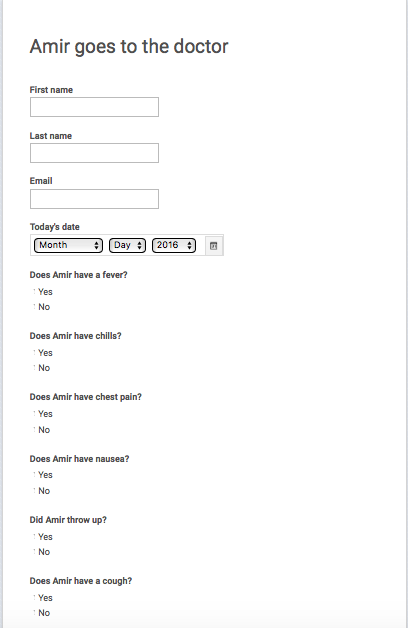 According to the US Bureau of Labor Statistics, 77% of jobs within the next decade will require some degree of technology skills. How can these skills be integrated in to English language programs? Kathy Harris explores the role of digital literacy with adult learners. Dr. Harris teaches in the MA TESOL program at Portland State University and also teaches literacy and low-level adult English Language Acquisition.
According to the US Bureau of Labor Statistics, 77% of jobs within the next decade will require some degree of technology skills. How can these skills be integrated in to English language programs? Kathy Harris explores the role of digital literacy with adult learners. Dr. Harris teaches in the MA TESOL program at Portland State University and also teaches literacy and low-level adult English Language Acquisition.
Think about the variety of your daily tasks that involve technology. Those tasks might include writing an email to a coworker, paying bills online, finding directions to a location, reading the academic calendar on your child’s school website, checking medical tests results in your eHealth portal, or reading an online manual for a new gadget you bought. The list is long!
The adult learners in our English language programs need to do these things too. They need to be able to get accurate health information, communicate and collaborate using the Internet for school or work, communicate with their children’s schools, apply for jobs, among many other things. Traditionally, digital literacy has not been considered to be part of literacy in adult English language programs, but that is rapidly changing.
In the 21st century, learning English literacy includes literacy in digital contexts, or digital literacy. Digital literacy includes the ability to use the Internet and other technologies to
- Find, evaluate and organize information
- Create and communicate information
- Generate useful questions to solve problems
- Share answers and solutions to problems
As we create classes and programs that meet our students’ needs, digital literacy needs to be included. One effective way to do that is to integrate digital literacy tasks right alongside literacy tasks in our classes, ideally doing the same type of task multiple times in different lessons or units.
For example, in a topic unit on health you might create a simple online form for learners to fill out for each lesson. It is very easy to create online forms. Here is an example of a very simple online form that I made for a low-level ESL class in a unit on going to the doctor:

The form was a follow up to reading the online book called Amir gets sick. Students are learning medical questions and medical vocabulary as well as having face-to-face roleplays with the questions and answers. Creating the form took less than 5 minutes and was a great way for my students to practice the vocabulary and grammar that we had been learning, while also building digital literacy skills.
Google Forms is one free online survey tool that is easy to use. Here is a list of videos created for teachers to show them how to create and use Google Forms created by Richard Byrne in his blog FreeTech4Teachers.
There are many benefits to integrating digital tasks alongside related lessons. It uses the same vocabulary and grammar as well as topic, so that only the digital format is new, making for a straight-forward learning situation. The same type of activity is done multiple times it allows for the development of both task and technology expertise by the teacher and the students as well as the opportunity to work through and get past the inevitable glitches. Most of the activities described here can be done with computers, smartphones, or other digital devices. If devices are limited, students can work in small groups sharing one device.
There are many digital literacy tasks that easily accompany English language lessons and units, including writing email messages or sending text messages, listening to related podcasts, reading the news online, creating short presentations, writing blog posts, creating digital stories, and many more.
 Finding and evaluating information is a critical aspect of digital literacy. While many of us English language teachers use the Internet for searching, we don’t always consciously know the strategies that we are using. Henry (2006) provides a nice pneumonic for the strategies used in searching that is really helpful when integrating search activities into our English language instruction. Like other types of digital literacy tasks, it is useful to have a search activity that is related to a lesson or unit that is alongside the other activities in the unit. That way the Internet search utilizes the same (or related) vocabulary, grammar structures, and topical information and only the actual Internet search task is new. Some examples include finding accurate local weather information, finding job information, locating a business, researching a health condition, comparing features and prices of an object or service, etc. Creating a search activity to accompany the units in a course can be an effective way to bring digital literacy skills into your classroom that creates opportunities to practice the digital skill of online searching while also providing practice using the language in the unit.
Finding and evaluating information is a critical aspect of digital literacy. While many of us English language teachers use the Internet for searching, we don’t always consciously know the strategies that we are using. Henry (2006) provides a nice pneumonic for the strategies used in searching that is really helpful when integrating search activities into our English language instruction. Like other types of digital literacy tasks, it is useful to have a search activity that is related to a lesson or unit that is alongside the other activities in the unit. That way the Internet search utilizes the same (or related) vocabulary, grammar structures, and topical information and only the actual Internet search task is new. Some examples include finding accurate local weather information, finding job information, locating a business, researching a health condition, comparing features and prices of an object or service, etc. Creating a search activity to accompany the units in a course can be an effective way to bring digital literacy skills into your classroom that creates opportunities to practice the digital skill of online searching while also providing practice using the language in the unit.
For more information on how to integrate digital literacy into English language instruction, there is a free online module for teachers on the topic here. You can equip students with the language they need for success with resources such as the Oxford Picture Dictionary. The brand new Third Edition has been updated with a section dedicated to Digital Literacy, and includes other relevant topics such as Cyber Safety, Information Technology and Internet Research. Find out more here.
References
Federal Communications Commission. (2010). Connecting America: The National Broadband Plan. Retrieved from https://www.broadband.gov/download-plan/
Henry, L. A. (2006). SEARCHing for an answer: The critical role of new literacies while reading on the Internet. The Reading Teacher, 59(7), 614–627.
Leu, D. J., Kinzer, C. K., Coiro, J., Castek, J., & Henry, L. A. (2013). New literacies: A dual-level theory of the changing nature of literacy, instruction and assessment. In D. E. Alvermann, N. J. Unrau, & R. B. Ruddell (Eds.), Theoretical models and processes of reading (6th ed.; pp. 1150–1181). Newark, DE: International Reading Association.
U.S. Department of Education, Office of Career, Technical, and Adult Education. (2015). Workforce Innovation and Opportunity Act: Integrating technology. WIOA Fact Sheet. Retrieved from https://www2.ed.gov/about/offices/list/ovae/pi/AdultEd/integrating-technology.pdf


Reblogged this on hungarywolf.
[…] Oxford University Press at least 77% of employees will need to be able to use technology. So what effect will this have on the adult ESL world? I thought it would have been more than 77% to be honest, and I can’t see it being a major […]
[…] like to review a prosperous dissertation proposal, you might want to download at least one of Digital literacy: the missing piece for Adult ESL learners – Oxford University Press the illustrations […]
[…] you’re, you need to Digital literacy: the missing piece for Adult ESL learners – Oxford University Press review and remember what you’ve written on your application form. The illustration should […]
[…] OXFORD UNIVERSITY PRESS. (2017, 1 31). Digital literacy: the missing piece for Adult ESL learners. Retrieved from https://teachingenglishwithoxford.oup.com2017/01/31/digital-literacy-the-missing-piece-for-adult-esl-learners/ […]